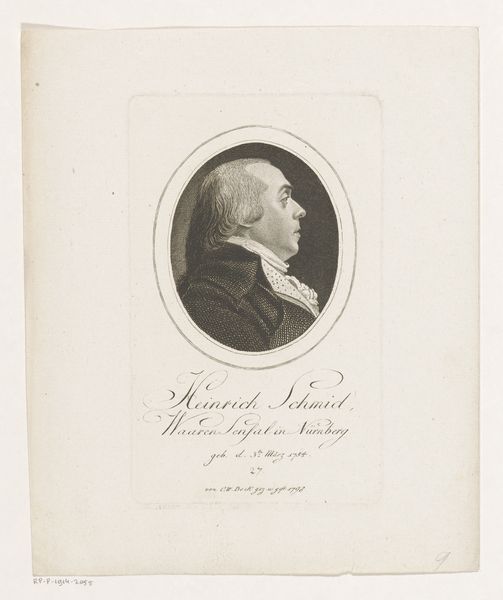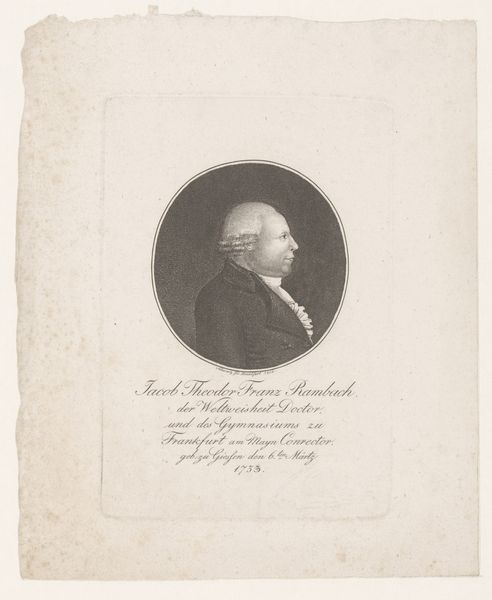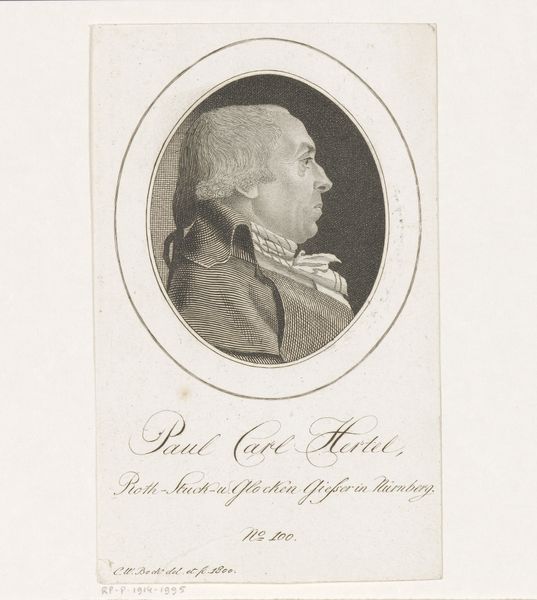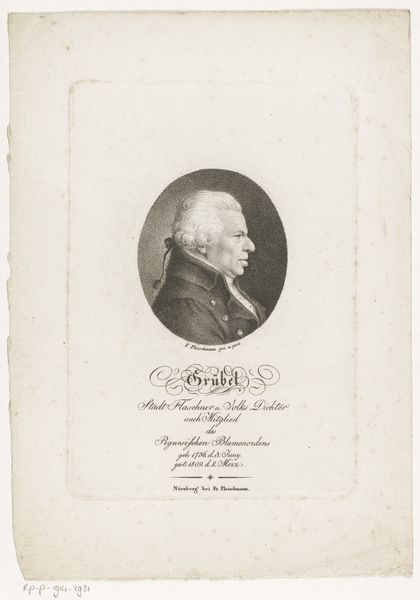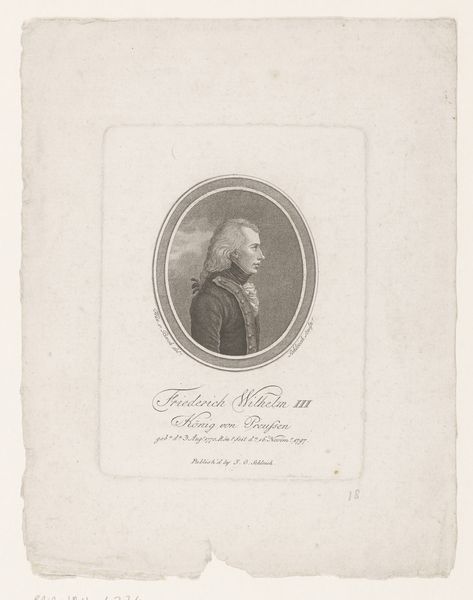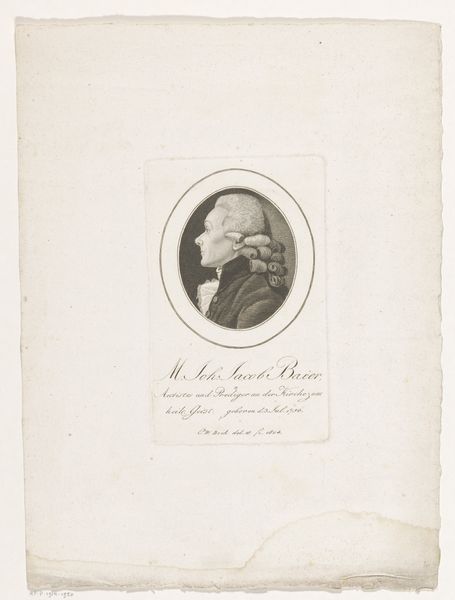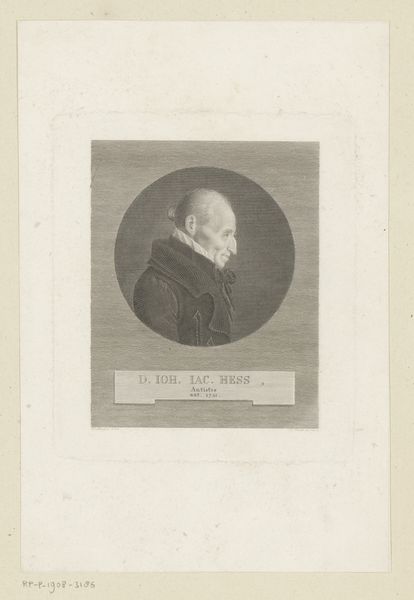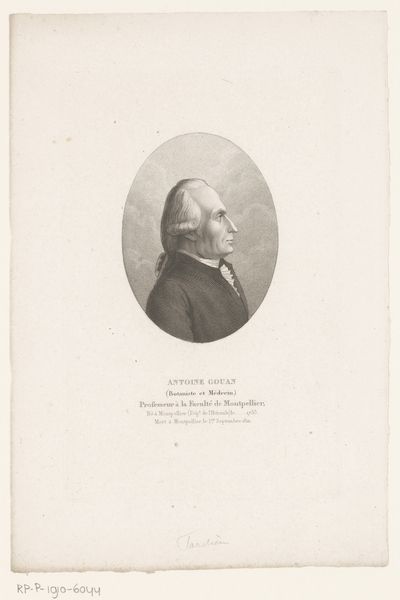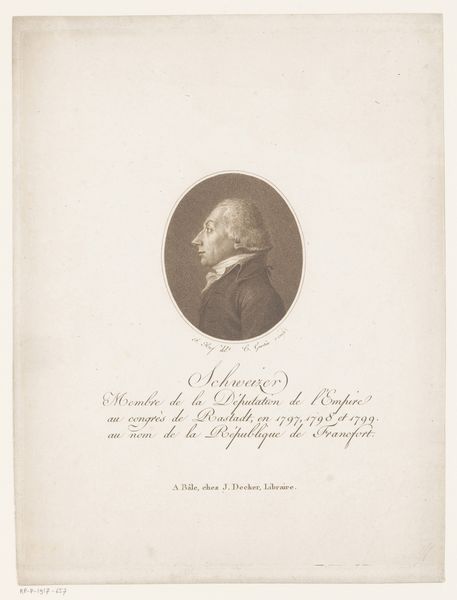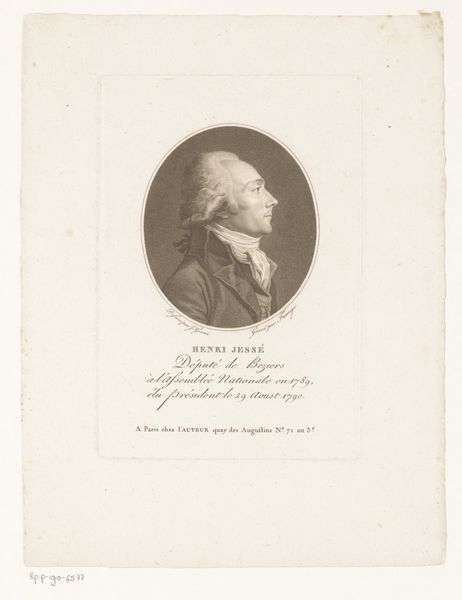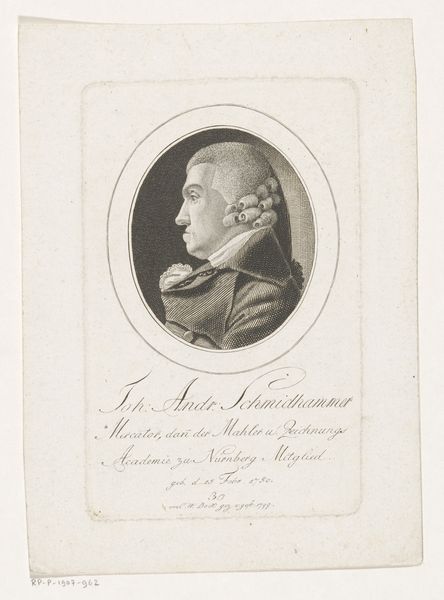
#
pencil drawn
#
photo of handprinted image
#
aged paper
#
toned paper
#
light pencil work
#
ink paper printed
#
old engraving style
#
personal sketchbook
#
sketchbook drawing
#
sketchbook art
Dimensions: height 230 mm, width 155 mm
Copyright: Rijks Museum: Open Domain
Curator: I’m immediately struck by the subtle gradations of tone in this print. It possesses a delicate formality; notice how the oval frame contains and emphasizes the figure. Editor: This is a print of Georg Christoph Albrecht Spiess. Although the date is unknown it was created sometime between 1782 and 1818, likely functioning as a portrait for the sitter and perhaps even marking Spiess’ status within the bourgeois merchant class of Nuremberg. Curator: Observe how the light delicately defines the planes of his face, subtly rendering the contours of his cheek and forehead. It's quite accomplished! The engraver's manipulation of line and stipple creates depth with a sense of refinement. Editor: I find it revealing how these types of portrait prints provided access and perhaps validation to the social sphere during the late 18th century. Being memorialized through portraiture functioned to bolster identity. Spiess is named with title and place of birth here, it seems almost like proof of life! Curator: Yes, there's also an interesting tension in this piece. Despite being a two-dimensional medium, there is volume suggested throughout, such as in the folds of his neck cloth and the slight turn of his head away from the viewer's space. It's captivating. Editor: Considering that Albrecht Spiess was a man of civic importance, what might this artwork tell us about representation, particularly pertaining to the male bourgeois identity of this historical moment? How are notions of success being formulated, represented, and memorialized? Curator: It truly is a fine example of printmaking! Editor: I concur, this print provides us a window onto constructions of status in 18th and 19th-century Europe. Thank you for exploring the technical merits of the work with me!
Comments
No comments
Be the first to comment and join the conversation on the ultimate creative platform.
